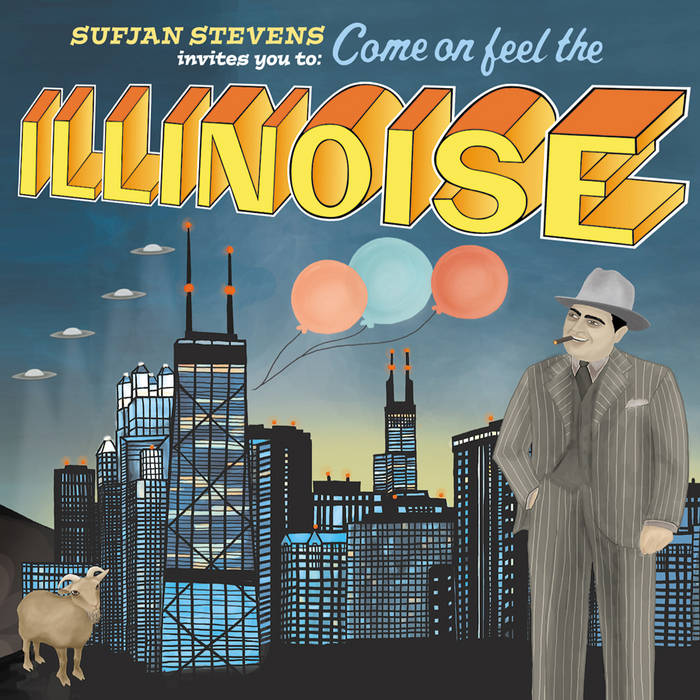There’s a moment in Super Size Me—Morgan Spurlock’s new documentary detailing the evils of the Big Mac—when I sat back in my seat and whispered, “That’s the new Michael Moore.”
No, scratch that; I didn’t actually whisper. That duty belonged to the rather rude journalist who sat next to me at the critic’s screening, an older gentlemen who offered unnecessary commentary like, “Ugh!” and “That just spoiled my dinner!” Apparently, he thought that such exclamations were insightful—in case we weren’t all equally disgusted by Spurlock’s close-ups of his own vomit.
I experienced my epiphany in silence, but that didn’t make it any less meaningful. The moment of realization came when Spurlock was conducting an interview with a high school cafeteria worker, a woman who offered Country Time lemonade as a healthy alternative to Coca-Cola. “But this has the same amount of sugar as Coca-Cola,” Spurlock berated her, noting the 36 grams of jitter-inducing stuff listed with the can’s nutritional facts.
The woman looked down, clearly uncomfortable, and then told Spurlock he would have to talk to somebody else. Forget stuffing your face and indulging in ruthless business tactics. Passing the buck to someone else? That’s truly the American way.
This, more than anything else, seems to be the point of Spurlock’s documentary. Some say he’s endorsing a shift away from personal responsibility by supporting the lawsuit of two obese girls against the McDonald’s Corporation. More than anything, though, Spurlock is asking the Golden Arches to own up to their responsibility. He takes sentences verbatim from McDonald’s defense and holds them to the argument. He travels across the country and uncovers several dubious, albeit legal, activities.
To explain any more about his practices would negate the joy of your own personal discovery. Surely you’ve heard the basics already: guy suffers through a McDonald’s-only diet for 30 days and records the damages made to his physical, mental, emotional, and sexual health. McDonald’s is hopping mad, but apparently, everything Spurlock did was on the right side of the law—including the appropriation of trademarked McDonald’s characters to illustrate his point. Truly, you haven’t lived until you’ve seen a grotesquely obese Ronald McDonald.
So could Super Size Me be Morgan Spurlock’s breakout, his equivalent of Roger and Me? Most signs point to yes. Super Size Me is extensively narrated—usually a kiss of death for documentaries—but Spurlock has such a jovial, easy-going nature that his voice-over is fun rather than ingratiating. It all begins with him addressing the camera, giving an order as well as introducing the title of his film: “Super size me.”
Screw The Blair Witch Project. That film, once the highest-grossing independent feature of all time, was supposed to be the product of a generation of kids running around with mom and dad’s camcorder. The informal aesthetic of Super Size Me is largely the same as Blair Witch’s (if it wasn’t shot on digital video, it certainly could have been) but is used to much more winning effect.
Super Size Me, along with recent successes like Spellbound and Winged Migration, is part of a mini-revolution in Hollywood that’s making documentaries much more palatable to the masses. Super Size Me is also part of another zeitgeist; not coincidentally, it shares its topic with one of the most debated non-fiction books in the last few years, Eric Schlosser’s Fast Food Nation. Fast Food Nation became required reading in courses across the U.S. (including several at the U of C) but Spurlock’s film avoids didacticism for two main reasons—first, it’s just as funny as it is political, and second, Spurlock himself is the kind of guy you’d like to throw back a couple of beers with.
Admittedly, the film does drag a little toward the end, but this is a sizeable length for a documentary—and it’s to Spurlock’s credit that even if the viewer gets momentarily distracted, he or she never forgets Spurlock’s high, unhealthy stakes. Watching him balloon from 185 to 205 pounds in one short month is surprisingly engaging. My only complaint is that Spurlock begins his experiment in a state healthier than that of the average American. He allows for this disparity when evaluating his final results, but this is probably one of the reasons some feel that the argument is rigged—McDonald’s included.
It’s surprising that Michael Moore is never mentioned by name in this exposé— maybe Spurlock wanted to make sure people saw his film as an homage and not a rip-off. He needn’t worry. He’s clearly done his research, and his knowledge of pop culture permeates the film—most notably, when a doctor compares Spurlock’s failing liver to that of Nicholas Cage’s in “Death in Las Vegas” [sic]. His cinephiliac nature serves Spurlock well, as he smooths real-life people into film-ready “characters” without resorting to caricature or stereotype. His vegan chef girlfriend, in particular, is lovely; she is probably more multi-dimensional than the “girlfriend” role written in the majority of Hollywood scripts. A scene is which she shows doubts about Spurlock’s upcoming stunt (over a well-rounded vegan meal, natch) is surprisingly touching. (Too bad the same can’t be said for the one scene featuring Spurlock’s predictably perturbed mother.)
There’s a few reasons why Super Size Me could have only been made today, and this modern, no-holds-barred approach is key to its appeal. The aforementioned vomit close-up probably wouldn’t be possible without the aesthetic inspired by reality TV, and Spurlock may not have asked his girlfriend to describe his burger-based impotence if Sex and the City hadn’t made a national pastime out of unapologetic sexual discussion.
Of course, Mr. Spurlock has his work cut out for him as the neo–Michael Moore (and I’m not even counting any inflammatory Academy Award acceptance speeches that may lie in his future). The argument many have against Michael Moore is that he taunts everyday people, occasionally cruelly, in his unrelenting quest to prove a point. In this regard, I am reminded of the high school cafeteria worker. Sure, she’s trying to pass the buck by referring Spurlock to her superior, but I can’t help but feel a little uncomfortable with her discomfort. As complaints go, though, this one is pretty minor. The finger has to point somewhere, and as long as the big-wigs and CEOs deny Spurlock’s request for an interview—as we see repeatedly in the film—some of their workers are bound to get hurt. Besides, is any of this really as humiliating as what we see every night on Fear Factor?
Graphically, the film is very inspired—you may see these kinds of charts in USA Today, but Spurlock brings them to life with colorful animation. My favorite effect involves a kind of visual collage, covering the entire screen—save for a spot Spurlock reserves for the talking head of the moment.
Throughout the film, Spurlock charitably offers screen time to those who disagree with him, but these voices of dissent mostly fade into the background (save for a Big Mac fanatic who must have secret sauce coursing through his blood). Never mind. As an argument, Super Size Me might be pretty one-sided, but at least that one side is entertaining.








